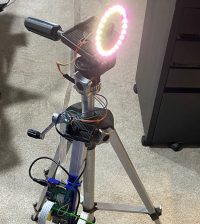- How to Adjust X and Y Axis Scale in Arduino Serial Plotter (No Extra Software Needed)Posted 7 months ago
- Elettronici Entusiasti: Inspiring Makers at Maker Faire Rome 2024Posted 7 months ago
- makeITcircular 2024 content launched – Part of Maker Faire Rome 2024Posted 9 months ago
- Application For Maker Faire Rome 2024: Deadline June 20thPosted 11 months ago
- Building a 3D Digital Clock with ArduinoPosted 1 year ago
- Creating a controller for Minecraft with realistic body movements using ArduinoPosted 1 year ago
- Snowflake with ArduinoPosted 1 year ago
- Holographic Christmas TreePosted 1 year ago
- Segstick: Build Your Own Self-Balancing Vehicle in Just 2 Days with ArduinoPosted 1 year ago
- ZSWatch: An Open-Source Smartwatch Project Based on the Zephyr Operating SystemPosted 1 year ago
Linux 4.10: New Open Source Features

Linux Kernel 4.10 introduces new features for the open source community.
The one sentence overview would be lots of open-source graphics driver work (as always), the open-source NVIDIA driver is killing it with this release, Intel TBM3 support, UBIFS file-encryption, more AMD Zen/Ryzen code, more ARM SoCs/platforms being mainlined, DAX iomap support, and a fair amount of other new hardware support.
The open-source NVIDIA (Nouveau) DRM driver this time around is quite exciting after missing out on their changes for Linux 4.9.
Work here includes:
- atomic mode-setting that allows setting output modes more cleanly by either being able to succeed or fail in one-go while also being able to test a desired mode in advance of the operation, reducing possible flickering situations while also being quicker.
- DisplayPort MST support has been pulled into DRM-Next tree of material.
- Performance-improving BOOST support, boost patch available in Linux 4.9 yet.
- LED driver for the light-up cards, a basic LED driver that hooks up to the LED subsystem and in turn allowing to sync the blinking to the CPU/disk/network activity or other manual controls.
The Linux 4.10 features so far continue to be expanded with the Broadcom VC4 DRM driver most notably used by Raspberry Pi hardware picking up some new functionality.
The VC4 DRM driver for providing open-source Raspberry Pi 3D capabilities with Linux 4.10 has added the kernel-side support for ETC1 texture compression while the VC4 Gallium3D driver has already been updated with this support when on a supported kernel.
Additionally, the latest VC4 DRM driver pull request has landed the kernel-side components for supporting fragment shader threading.
Finally you can find Linux Kernel 4.10 other features here.















